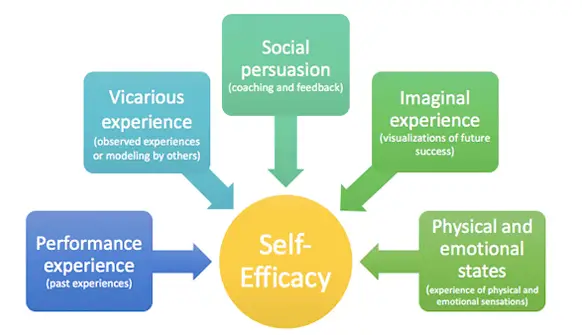In doing your research, what variables of the study should be included in the research paradigm? This article provides advice and gives five issues and problems and five examples of identifying variables to illustrate how it is done.
While trying to conceptualize their research paradigm, one of the doctors in educational administration students in my advanced statistics class once asked: “How do you choose the study variables? Which ones should be included in the research paradigm?”
This concern comes up when dealing with research problems involving several variables. Such studies employ multivariate analysis like multiple regression, factor analysis, discriminant analysis, among others. Many quantitative dissertation papers use these statistical tests. Therefore, the variables of the study need to be correctly identified before data gathering.
Of course, to put everything in its proper context, the study’s paradigm appears in the latter part of the formal research paper. Choosing the variables of a study requires a good understanding of the topic under investigation. A good understanding of the subject comes after a thorough review of related literature. However, it would be best to clarify what issues or problems you want to investigate.
Thus, choosing the variables that will form part of the paradigm requires clear thesis statements. Given that the graduate students’ pursue a doctoral degree in educational administration, they must look into issues or problems related to their specialization.
Given the preceding discussion, a doctor of education degree prepares individuals to serve as leaders in schools or colleges or work for school districts or government organizations. Doctor of education holders usually researches for policy-making purposes. Hence, the exploration of educational administration topics precedes any research activity.
Variables of the Study
5 Examples of Emerging Educational Issues
Research titles reflect the variables of the study. For example, the following issues or problems on educational administration may be looked into by graduate students of educational administration:
- Efficacy of peer supervision,
- Factors affecting the impact of professional development programs on teachers’ performance,
- Factors affecting students’ self-efficacy in elementary education,
- Classroom factors affecting students’ academic achievement, and
- Factors affecting the effective integration of information technology in the classroom.
Corresponding Examples of Variables
The above titles expressly state or imply the variables of the study. Specifically, in the specific order given above, the variables considered include:
- peer supervision or arrangements where peers work together for mutual benefit;
- professional development programs, teachers’ performance;
- factors affecting students’ self-efficacy such as performance experience, vicarious experience, social persuasion, imaginal experience, and physical and emotional states (Bandura, 1988), students’ self-efficacy;
- classroom factors, students’ achievement; and
- factors affecting the use of information technology, the effectiveness of information technology.
Meanwhile, for statistical tests to be appropriately applied, the variables must be measurable. The variables belong to any of the four types of variables: nominal, ordinal, interval, and ratio.
The types of variables included in the paradigm determine the statistical technique to use for such variables. Different combinations of variables mean applying various statistical tests appropriate in finding out if there are correlations or differences between variables.
Finally, I provide you an example to hammer the idea home. To illustrate, I am providing an example related to the student’s experiences to demonstrate what the previous explanation means clearly.
Self-Efficacy Theory
The following paradigm demonstrates the relationship of variables in the study on students’ self-efficacy based on the Self-Efficacy Theory.

Hence, self-efficacy is determined by five experiences summed up into performance, vicarious, social, imaginal, and physical and emotional states. These themes emerged presumably from previous studies on what determines a person’s attitude towards a specific task in a particular context.
Raina Burditt explains Self-Efficacy Theory in more detail the influential factors that determine self-efficacy in the video below:
Finally, I believe that practice makes perfect. Now, try to work on the other four examples given above. Doing so will test your understanding of how to determine which variables to include in your study.
References
Bandura, A. (1988). Organisational applications of social cognitive theory. Australian Journal of management, 13(2), 275-302.
LaRocca, B. (2017). Self-efficacy tookit. Retrieved on September 24, 2018 from https://www.transformingeducation.org/self-efficacy-toolkit/
© 2018 September 24 P. A. Regoniel
[cite]



That’s great reflection. Thanks for the feedback!
Hello, My name is Stephen! I am a family practice Doctor of 35 years with the enlightening and frightening realization; many people do not know how to discern fact from fiction.
I stumbled upon your article 08/18/2013 and would like to offer you what I have discovered as to how best to distinguish fact from fiction with complete clarity!
All you have to do is turn off your human and anything in and everything it humans people create is fiction.
Humans are the only creatures who can create so everything that we create re-create co-create is fiction, magic, manipulation, and unfortunately, virtual reality made solid.
You can think of this as do re mi is the anything and everything of the universe.
People then take all of that and capture it into mathematics 1 2 3. Then we take mathematics and try to turn it into words ABC.
For example, the word car is a loaded word because you have to define what is a car vs. what is not a car vs. all of the billions of variations of cars.
I discovered pain; the word is tragically misunderstood by almost all of the worlds medical doctors.
Pain is muscle, my, mental, emotional, spiritual, situational resolved with 10 combined therapies. Most importantly every muscle cell, myofibril requires force of release stretching, massaging, spinal unwinding, and most importantly acupuncture and hypodermic intramuscular stimulating needling.
In 1940 a group of orthopedic surgeons betrayed humanity by a picture professing bone-on-bone with a godlike belief that they could fix what God created with knives bone saws amputations auto-parts and glue. Joint replacements nerve repair spinal fusions any procedure with a knife is always wrong to treat stress and strain pain.
The world orthopedic surgeons have carte blanche, immunity, impunity to ritualistic use bone saws amputating living tissue fixing God’s creation with handtools bone saws and glue. Glue! Glue! I believed at one time that it was possible for people to use glue and fix the human body. Now that I know fact vs. fiction it is inconceivable that the whole world now believes in vampires requiring the corpse to be exhumed hearts removed, burned in the city square, and a stake placed in the body to hold him down, so they do not move out of the grave.
Pain is a feeling from within all senses from within is the truth. You treat people with pain with compassion, and their suffering will dissipate just like mother nature intended it to be.
Pain is not anything else, for example, joint pain, nerve pain, arthritis, rheumatism, bone-on-bone, joints wearing out, cartilage, migraine, bursitis, fibromyalgia, or anything derived from a picture or blood test.
The pain everyone experiences from within are TRUTH – The universe is made of materials forces, and energies frequencies so do re mi! To the trained ear if a musician misses one note in an entire sonata, they will catch it. Less than masterful years will not. It is impossible to full mother nature and mathematics because if the numbers do not add up or match it is fiction.like the sun, the moon
Anything that we construct into words is all manipulated thus fictional.
Everything that people take away from everything and anything that is natural becomes contaminated.
So what you believe? If it did not fit mathematical models, it is fiction.
If it did not fit the five elements or steps within of scientific methodology, it is fiction.
First have an indelible reference grounded in do re mi, 1 2 3, ABC = Cause-effect, problem-solution = resolution Repeatable to 99.999% of the time.